 In this story from Herman Melville, the major theme (finding the right balance between ambition, fame and happiness in life) is introduced indirectly through a chance meeting. A struggling writer is in a “desperate mood” after negative reviews of his latest work. His life changes when he is introduced to a contented, good-humored man who goes house to house teaching the fiddle. The writer admires the way “commonplace” fiddler, who appears to have no special talents, is able to live life to the fullest. Enlightenment comes when he learns the fiddler’s secret. Other themes: accepting criticism, judging by appearances. More…
In this story from Herman Melville, the major theme (finding the right balance between ambition, fame and happiness in life) is introduced indirectly through a chance meeting. A struggling writer is in a “desperate mood” after negative reviews of his latest work. His life changes when he is introduced to a contented, good-humored man who goes house to house teaching the fiddle. The writer admires the way “commonplace” fiddler, who appears to have no special talents, is able to live life to the fullest. Enlightenment comes when he learns the fiddler’s secret. Other themes: accepting criticism, judging by appearances. More…
Category Archives: Short Stories
Désirée’s Baby
 Kate Chopin’s Désirée’s Baby Kate Chopin’s Désirée’s Baby reflects the culture of America’s ‘Deep South’ in the mid-1800s. The name Désirée originates from the French word for desire. Armand Aubigny, a young plantation owner who is proud, bigoted and harsh on his slaves, marries the orphaned Désirée for her beauty. He is not concerned about her unknown background until she has a mixed-race baby. His reaction causes Désirée to run from the house and flee with the baby into the bayou. Some weeks later, Armand uncovers an even more devastating secret. Themes (see below) include love, impulsiveness, racism, elitism, shame and/or vindictiveness, and identity. More…
Kate Chopin’s Désirée’s Baby Kate Chopin’s Désirée’s Baby reflects the culture of America’s ‘Deep South’ in the mid-1800s. The name Désirée originates from the French word for desire. Armand Aubigny, a young plantation owner who is proud, bigoted and harsh on his slaves, marries the orphaned Désirée for her beauty. He is not concerned about her unknown background until she has a mixed-race baby. His reaction causes Désirée to run from the house and flee with the baby into the bayou. Some weeks later, Armand uncovers an even more devastating secret. Themes (see below) include love, impulsiveness, racism, elitism, shame and/or vindictiveness, and identity. More…
Night
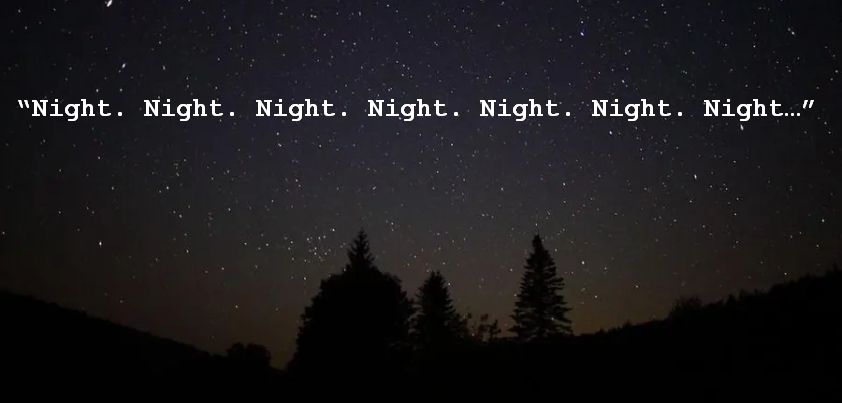 In this heart-wrenching story by Tatyana Tolstaya, an impoverished eighty-year-old woman struggles to cope with task of looking after her middle-aged, severely retarded son. The man is dependent on his mother’s directions to get him through the day. He has virtually no social skills, is confused about women, and is prone to violent outbursts and extreme behaviour when things don’t go his way. The story begs but does not answer the question: What will happen when his mother is no longer around to take care of him? Themes: love and devotion, mental health, alienation, poverty, fear, dreams and fantasy. More…
In this heart-wrenching story by Tatyana Tolstaya, an impoverished eighty-year-old woman struggles to cope with task of looking after her middle-aged, severely retarded son. The man is dependent on his mother’s directions to get him through the day. He has virtually no social skills, is confused about women, and is prone to violent outbursts and extreme behaviour when things don’t go his way. The story begs but does not answer the question: What will happen when his mother is no longer around to take care of him? Themes: love and devotion, mental health, alienation, poverty, fear, dreams and fantasy. More…
A Choice of Butchers
 In this confronting story from William Trevor, a seven-year-old boy is faced with several issues he is far too young to understand: a hard-drinking, overbearing father he catches passionately embracing their maid; a monetary gift and unexpected good-night kiss from their soft-spoken, empathetic lodger; and a perpetually tired, unaffectionate mother who appears to passively accept her lot. Add to this that he is an “afterthought child” with both parents in their fifties and the question of why a butcher’s family would need a maid, and the story becomes an amateur psychological sleuth’s dream with some serious unstated themes. More…
In this confronting story from William Trevor, a seven-year-old boy is faced with several issues he is far too young to understand: a hard-drinking, overbearing father he catches passionately embracing their maid; a monetary gift and unexpected good-night kiss from their soft-spoken, empathetic lodger; and a perpetually tired, unaffectionate mother who appears to passively accept her lot. Add to this that he is an “afterthought child” with both parents in their fifties and the question of why a butcher’s family would need a maid, and the story becomes an amateur psychological sleuth’s dream with some serious unstated themes. More…
A Handful of Dates
 This story by Sudanese author Tayeb Salih is about a young boy’s relationship with his grandfather. They were initially very close, and the boy idolized the old man. In a “coming of age” event, the boy realizes that his grandfather has become rich and powerful by taking advantage of the misfortune of others. The boy feels especially bad for a neighbor who has lost most of his land to his grandfather. His grandfather is determined to own the rest of the land, and is part of a group of moneylenders who take away most of the neighbor’s annual date harvest. More…
This story by Sudanese author Tayeb Salih is about a young boy’s relationship with his grandfather. They were initially very close, and the boy idolized the old man. In a “coming of age” event, the boy realizes that his grandfather has become rich and powerful by taking advantage of the misfortune of others. The boy feels especially bad for a neighbor who has lost most of his land to his grandfather. His grandfather is determined to own the rest of the land, and is part of a group of moneylenders who take away most of the neighbor’s annual date harvest. More…
Searching for Summer
 Published in 1958, ten years into the Cold War, this Jane Aiken story is set in the aftermath of an unstated nuclear event. Massive clouds surround the Earth, blocking out the sun and stars. People crave the sun’s warmth and light, which only penetrate the clouds on rare, short-lived occasions. A newlywed couple set off on their honeymoon in search of one of these “bits of sun”. An act of kindness along the way leads them to more sun and starlight than many people see in their lives. Themes: taking things for granted, consequences of war, kindness, consideration for others. More…
Published in 1958, ten years into the Cold War, this Jane Aiken story is set in the aftermath of an unstated nuclear event. Massive clouds surround the Earth, blocking out the sun and stars. People crave the sun’s warmth and light, which only penetrate the clouds on rare, short-lived occasions. A newlywed couple set off on their honeymoon in search of one of these “bits of sun”. An act of kindness along the way leads them to more sun and starlight than many people see in their lives. Themes: taking things for granted, consequences of war, kindness, consideration for others. More…
The Law of Life
 Jack London‘s The Law of Life tells of the life and impending death of Koskoosh, an old Inuit who was once chief of his tribe but is left by them to die in the snow. Some critics suggest that although Koskoosh is the protagonist, the real hero of the story is an old moose that was too weak to keep up with its herd. Can you see why? Major themes: the inevitability of death (the law of life), survival of the individual (man vs. nature), survival of the tribe (expendability of the old and weak), tradition, courage, acceptance. More…
Jack London‘s The Law of Life tells of the life and impending death of Koskoosh, an old Inuit who was once chief of his tribe but is left by them to die in the snow. Some critics suggest that although Koskoosh is the protagonist, the real hero of the story is an old moose that was too weak to keep up with its herd. Can you see why? Major themes: the inevitability of death (the law of life), survival of the individual (man vs. nature), survival of the tribe (expendability of the old and weak), tradition, courage, acceptance. More…
Another Kind of Life
 People whose ancestors are not native to a country often underestimate the spiritual and cultural connection that indigenous inhabitants have to their traditional family lands. This melancholy story from Roderick Finlayson describes the disappointment and disillusionment of a city-based Maori man who takes advantage of a rare weekday off work to visit an uncle still living in his kainga (home village). He comes away with a great sense of loss, not only of his relationship with “home”, but also of his language. Themes: urbanization, connection (to family, land and culture); change (industrialization, land development), loss. More…
People whose ancestors are not native to a country often underestimate the spiritual and cultural connection that indigenous inhabitants have to their traditional family lands. This melancholy story from Roderick Finlayson describes the disappointment and disillusionment of a city-based Maori man who takes advantage of a rare weekday off work to visit an uncle still living in his kainga (home village). He comes away with a great sense of loss, not only of his relationship with “home”, but also of his language. Themes: urbanization, connection (to family, land and culture); change (industrialization, land development), loss. More…
After the Ball / Dance
 The major themes of this story from Leo Tolstoy are the circumstances that determine “good” and “evil”, and the morality of blaming a child for the actions of his/her father. The protagonist is captivated by a beautiful woman. They attend an elegant ball, where he is impressed by the demeanor of her father, a senior military officer. His feelings change the next morning when he witnesses the father officiating at the brutal punishment of a deserting soldier. Other themes: romance, judging by appearances, point of view (cruelty vs. duty), class, moral indignation vs. naivety. More…
The major themes of this story from Leo Tolstoy are the circumstances that determine “good” and “evil”, and the morality of blaming a child for the actions of his/her father. The protagonist is captivated by a beautiful woman. They attend an elegant ball, where he is impressed by the demeanor of her father, a senior military officer. His feelings change the next morning when he witnesses the father officiating at the brutal punishment of a deserting soldier. Other themes: romance, judging by appearances, point of view (cruelty vs. duty), class, moral indignation vs. naivety. More…
The Goose Father
 In this story by Krys Lee, loneliness drives a South Korean gireogi appa (goose father) to take in a tenant after six months’ living alone. The tenant, an enigmatic young man half the landlord’s age, arrives on his doorstep with a goose he believes to be his reincarnated mother. As the mismatched pair get to know each other, sexual tension builds between them. Something unexpected occurs when the landlord finally comes to terms with his sexual inclinations and is about to express his feelings by kissing the younger man. Themes include family, loneliness, sexuality, love, betrayal, guilt, forgiveness, the supernatural. More…
In this story by Krys Lee, loneliness drives a South Korean gireogi appa (goose father) to take in a tenant after six months’ living alone. The tenant, an enigmatic young man half the landlord’s age, arrives on his doorstep with a goose he believes to be his reincarnated mother. As the mismatched pair get to know each other, sexual tension builds between them. Something unexpected occurs when the landlord finally comes to terms with his sexual inclinations and is about to express his feelings by kissing the younger man. Themes include family, loneliness, sexuality, love, betrayal, guilt, forgiveness, the supernatural. More…
All at One Point
Some time ago we featured Distance of the Moon, the first story in Italo Calvino’s Cosmicomics collection. In this, the fourth story, we travel back to before the beginning of time. Everything (and everyone) in the universe existed in a single point in space. Things were rather crowded and people had no chance to move about and meet others. However, everyone knew and loved Mrs. Ph(i)Nk_0, whose wish for enough room to make noodles caused a burst of positive energy that resulted in the “big bang” and universe as we know it today. Theme: the power of selflessness and love. More…
A Mild Attack of Locusts
 Doris Lessing’s story about a British farming family in post-World War 2 Africa contrasts the richness and beauty of the land with the destructive power of nature. The major theme is survival: for the locust swarm, through instinct and sheer weight of numbers; for the farmers, through planning, preparation, manpower and, when these fail, being prepared to start over. Other themes: helplessness, devastation, the ongoing cycles of struggle against nature, perseverance. The message of the story lies in the many references to being finished/ruined. This is never certain unless one gives up hope and stops fighting to survive. More…
Doris Lessing’s story about a British farming family in post-World War 2 Africa contrasts the richness and beauty of the land with the destructive power of nature. The major theme is survival: for the locust swarm, through instinct and sheer weight of numbers; for the farmers, through planning, preparation, manpower and, when these fail, being prepared to start over. Other themes: helplessness, devastation, the ongoing cycles of struggle against nature, perseverance. The message of the story lies in the many references to being finished/ruined. This is never certain unless one gives up hope and stops fighting to survive. More…
Kew Gardens
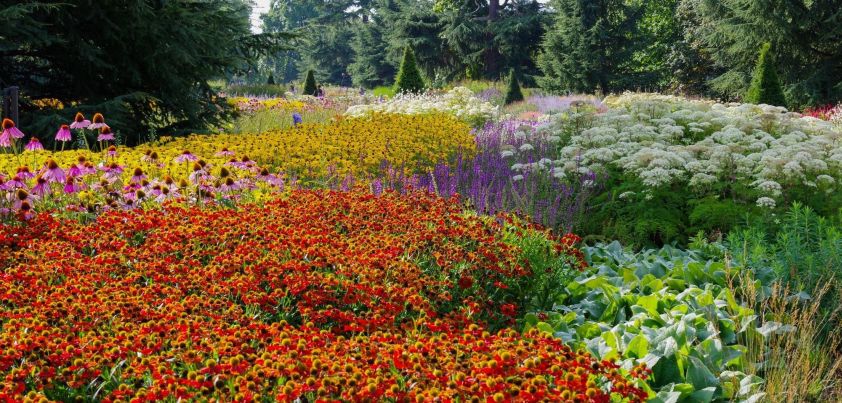 Rather than a unified plot, this Virginia Woolf story describes a series of unrelated events over a few minutes of time. A married couple exchange memories of earlier visits to the gardens; an eccentric old man accompanied by a carer talks nonsense to the flowers; two elderly women break into their small talk to gossip about the old man; an infatuated young couple create their own memories for later visits; a purposeful snail decides on the best path to its destination. Themes: peace and beauty amid turmoil, isolation, memories, regret, aging, romance, gender roles, aimlessness vs. focus and determination. More…
Rather than a unified plot, this Virginia Woolf story describes a series of unrelated events over a few minutes of time. A married couple exchange memories of earlier visits to the gardens; an eccentric old man accompanied by a carer talks nonsense to the flowers; two elderly women break into their small talk to gossip about the old man; an infatuated young couple create their own memories for later visits; a purposeful snail decides on the best path to its destination. Themes: peace and beauty amid turmoil, isolation, memories, regret, aging, romance, gender roles, aimlessness vs. focus and determination. More…
A Horseman in the Sky
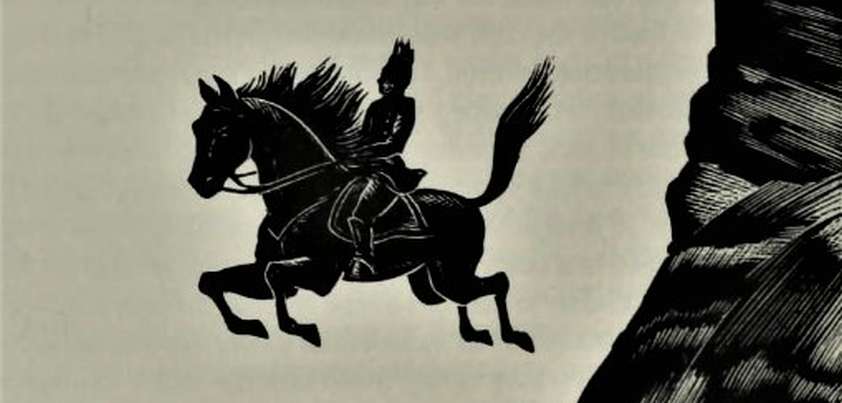 This war story from Ambrose Bierce has three main themes: 1) honor and the need to do ones duty; 2) the brutality of any kind of war; and 3) the particularly cruel nature of civil war, which can set friend against friend and family against family. For me, the defining moment in the story is when the enemy soldier turns and seemingly looks into Carter Druse’s eyes. As Carter recognizes his father, does his father also see and recognize him? Could knowing that Carter did his duty explain the proud way the horseman appeared to ‘ride’ through the sky? More…
This war story from Ambrose Bierce has three main themes: 1) honor and the need to do ones duty; 2) the brutality of any kind of war; and 3) the particularly cruel nature of civil war, which can set friend against friend and family against family. For me, the defining moment in the story is when the enemy soldier turns and seemingly looks into Carter Druse’s eyes. As Carter recognizes his father, does his father also see and recognize him? Could knowing that Carter did his duty explain the proud way the horseman appeared to ‘ride’ through the sky? More…
The Memsahib of Mandla
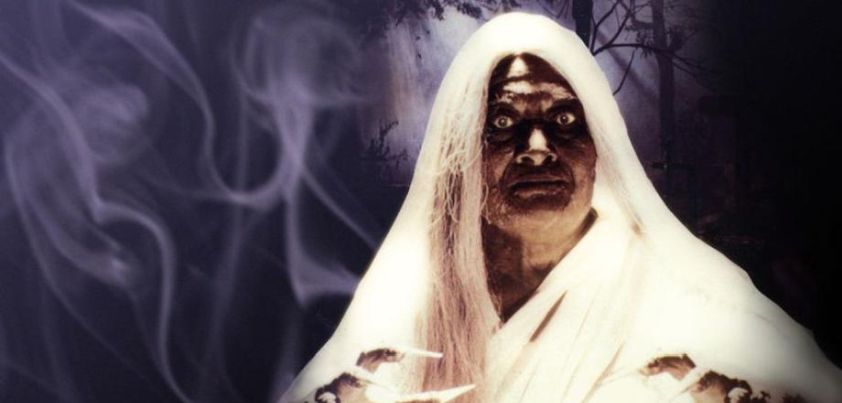 In this story by Khushwant Singh, nature and the ghost of a woman who founded an Indian missionary school combine to drive a British man and his family from a forest officer’s rest house. The rest house was the woman’s home before it was appropriated by the government, and hasn’t been lived in since she died. In addition to being insensitive and chauvinistic, the husband typifies the stereotype of arrogant, self-serving British officials during the Raj. He decides to shoot the ghost, but things don’t turn out as planned. Themes include colonialism, humanitarianism, loyalty, fear, justice, the supernatural. More…
In this story by Khushwant Singh, nature and the ghost of a woman who founded an Indian missionary school combine to drive a British man and his family from a forest officer’s rest house. The rest house was the woman’s home before it was appropriated by the government, and hasn’t been lived in since she died. In addition to being insensitive and chauvinistic, the husband typifies the stereotype of arrogant, self-serving British officials during the Raj. He decides to shoot the ghost, but things don’t turn out as planned. Themes include colonialism, humanitarianism, loyalty, fear, justice, the supernatural. More…
Battle Royal
 This “coming of age story” is the self-contained first chapter of Ralph Ellison’s acclaimed novel, Invisible Man. A young African American is invited to repeat his high school graduation speech, which focused on humility, at a gathering of the town’s leading white citizens. Upon arrival, he learns that he must first participate in a “battle royal”: a depraved, demeaning group fight event. When he finally makes his speech, few people pay any attention until a slip of the tongue changes its tone from humble to activist. Themes include heritage and identity, naiveté, racism, emancipation, class, sexism, violence. More…
This “coming of age story” is the self-contained first chapter of Ralph Ellison’s acclaimed novel, Invisible Man. A young African American is invited to repeat his high school graduation speech, which focused on humility, at a gathering of the town’s leading white citizens. Upon arrival, he learns that he must first participate in a “battle royal”: a depraved, demeaning group fight event. When he finally makes his speech, few people pay any attention until a slip of the tongue changes its tone from humble to activist. Themes include heritage and identity, naiveté, racism, emancipation, class, sexism, violence. More…
Crazy Sunday
 This partly autobiographical story from F. Scott Fitzgerald deals with the relationships between an up-and-coming Hollywood screenwriter (Joel), a powerful movie director (Miles), and the director’s wife (Stella). All three suffer major insecurity issues thanks to Hollywood’s toxic, highly competitive culture. Miles is a troubled adulterer; he and Stella look upon Joel as a friend/confidante; Joel has much stronger feelings for Stella. Unfortunately (or fortunately depending how you look at it), Miles dies before the seemingly inevitable marriage bust-up, and the future of Joel and Stella is left up in the air. Themes include insecurity, jealousy, appearances, romance, infidelity. More…
This partly autobiographical story from F. Scott Fitzgerald deals with the relationships between an up-and-coming Hollywood screenwriter (Joel), a powerful movie director (Miles), and the director’s wife (Stella). All three suffer major insecurity issues thanks to Hollywood’s toxic, highly competitive culture. Miles is a troubled adulterer; he and Stella look upon Joel as a friend/confidante; Joel has much stronger feelings for Stella. Unfortunately (or fortunately depending how you look at it), Miles dies before the seemingly inevitable marriage bust-up, and the future of Joel and Stella is left up in the air. Themes include insecurity, jealousy, appearances, romance, infidelity. More…
Little Whale, Varnisher of Reality
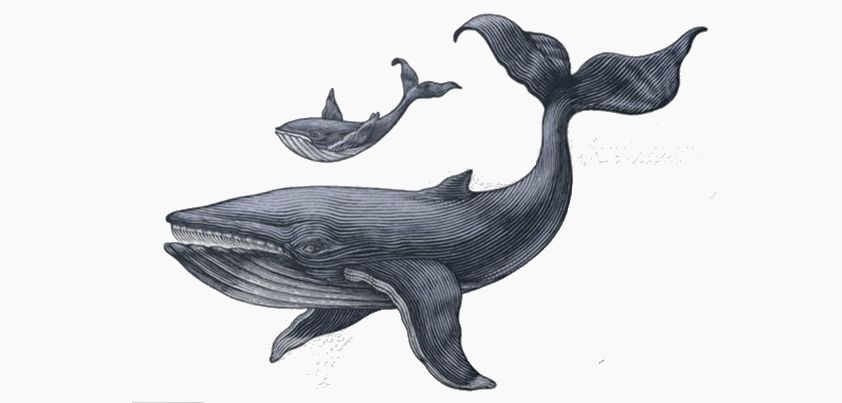 Seen as an allegory of aspects of Soviet life (censorship and fear of malevolent authority), this story by Vasily Aksyonov contrasts the stressful life of a father with the blissful world of his three-year-old son. Returning home after a difficult day, the weak-willed man would rather spend time in the fantasy world of the boy, whose imagination makes everything right, than make an important phone call. He dreads the outcome of the call, which appears critical to his family and friends, and keeps putting it off. Themes include childhood innocence vs. adulthood, father-son relationships, fantasy, manipulation of reality, fear, procrastination. More…
Seen as an allegory of aspects of Soviet life (censorship and fear of malevolent authority), this story by Vasily Aksyonov contrasts the stressful life of a father with the blissful world of his three-year-old son. Returning home after a difficult day, the weak-willed man would rather spend time in the fantasy world of the boy, whose imagination makes everything right, than make an important phone call. He dreads the outcome of the call, which appears critical to his family and friends, and keeps putting it off. Themes include childhood innocence vs. adulthood, father-son relationships, fantasy, manipulation of reality, fear, procrastination. More…
Father Against Mother
 Brazil was the last country in the Western world to abolish slavery. Major themes of this story by Joaquim Maria Machado de Assis are the brutality of slavery and the ethical dilemma of the protagonist (a destitute slave catcher whose wife has just had a baby) in returning a pregnant escaped slave to potentially cruel punishment. Literary devices used include understatement (pursuing slaves was … not a very noble profession), sarcasm (They would sometimes be beaten, and not all of them liked being beaten.) and metaphor (That unripe fruit entered the world amid the cries and moans of the mother…). More…
Brazil was the last country in the Western world to abolish slavery. Major themes of this story by Joaquim Maria Machado de Assis are the brutality of slavery and the ethical dilemma of the protagonist (a destitute slave catcher whose wife has just had a baby) in returning a pregnant escaped slave to potentially cruel punishment. Literary devices used include understatement (pursuing slaves was … not a very noble profession), sarcasm (They would sometimes be beaten, and not all of them liked being beaten.) and metaphor (That unripe fruit entered the world amid the cries and moans of the mother…). More…
What You Pawn I Will Redeem
 In Sherman Alexie’s typical witty style, this story recounts what turns out to be a very special day in the life of a homeless, alcoholic Native American man. The central theme, symbolized by his grandmother’s stolen ceremonial regalia, is the importance of Native Americans being able to preserve and connect with their tribal culture. A second theme is how past injustices and support system failures have resulted in Native Americans having the highest homelessness and poverty rates in the country. Other themes: identity, alcoholism, community, kindness, perseverance, connection. A possible moral: never give up if you really want something. More…
In Sherman Alexie’s typical witty style, this story recounts what turns out to be a very special day in the life of a homeless, alcoholic Native American man. The central theme, symbolized by his grandmother’s stolen ceremonial regalia, is the importance of Native Americans being able to preserve and connect with their tribal culture. A second theme is how past injustices and support system failures have resulted in Native Americans having the highest homelessness and poverty rates in the country. Other themes: identity, alcoholism, community, kindness, perseverance, connection. A possible moral: never give up if you really want something. More…
The Love of My Life
 This T. C. Boyle story holds a powerful message for teenagers in their first serious relationship. All too often, young lovers mistake the closeness that comes with shared sexual awakening for long-term, enduring love. The truth remains hidden until the relationship is tested in some way, in this case with an unplanned pregnancy. Initially, readers admire the young couple for the strength of their affection towards each other. Disappointment begins with the girl’s selfish indecision about the pregnancy, quickly followed by disgust at the couple’s terrible treatment of the new-born baby and willingness to blame each other for what happens. More…
This T. C. Boyle story holds a powerful message for teenagers in their first serious relationship. All too often, young lovers mistake the closeness that comes with shared sexual awakening for long-term, enduring love. The truth remains hidden until the relationship is tested in some way, in this case with an unplanned pregnancy. Initially, readers admire the young couple for the strength of their affection towards each other. Disappointment begins with the girl’s selfish indecision about the pregnancy, quickly followed by disgust at the couple’s terrible treatment of the new-born baby and willingness to blame each other for what happens. More…
The Devoted Son
 This heartbreaking story from Anita Desai begins with a working-class Indian father’s proudest moment. His son, always exceedingly respectful to his parents, has topped the country at medical school. The son becomes a highly successful doctor, and fulfills his familial duty by caring for his parents in their old age. As the father’s mental and physical health wanes, their relationship changes. The son ceases to respect his father’s wishes, and implements a harsh treatment plan that includes progressive denial of the old man’s few remaining pleasures in life. Themes: sacrifice, success, respect, envy, rituals/traditions, aging with dignity, devotion vs. duty. More…
This heartbreaking story from Anita Desai begins with a working-class Indian father’s proudest moment. His son, always exceedingly respectful to his parents, has topped the country at medical school. The son becomes a highly successful doctor, and fulfills his familial duty by caring for his parents in their old age. As the father’s mental and physical health wanes, their relationship changes. The son ceases to respect his father’s wishes, and implements a harsh treatment plan that includes progressive denial of the old man’s few remaining pleasures in life. Themes: sacrifice, success, respect, envy, rituals/traditions, aging with dignity, devotion vs. duty. More…
The Direction of the Road
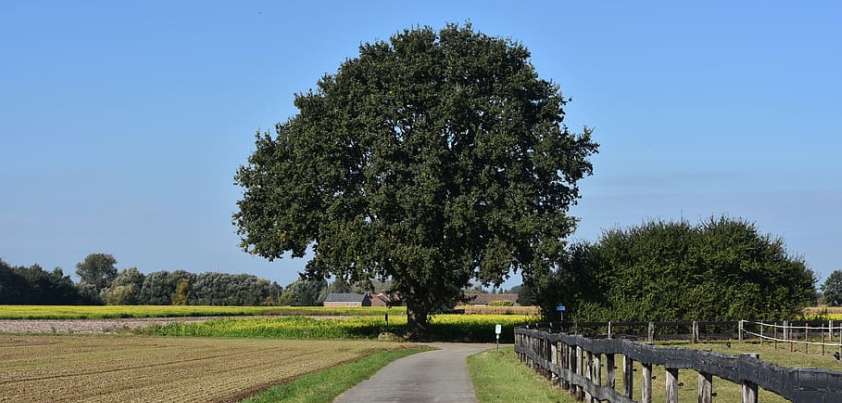 Only an author as creative as Ursula Le Guin could conceive a story where the protagonist is a ‘murderous’ roadside oak tree. A major theme is change. As the road develops from a bridle trail to a tarred highway, the tree laments differences in the environment (birds are fewer, and the wind’s foul) and human behavior, comparing modern passers-by to beetles always rushing about and never looking up. Another theme is perspective. The tree cannot move and has no concept of life after death. To make sense of the world, it comes up with alternative interpretations of relativity and eternity. More…
Only an author as creative as Ursula Le Guin could conceive a story where the protagonist is a ‘murderous’ roadside oak tree. A major theme is change. As the road develops from a bridle trail to a tarred highway, the tree laments differences in the environment (birds are fewer, and the wind’s foul) and human behavior, comparing modern passers-by to beetles always rushing about and never looking up. Another theme is perspective. The tree cannot move and has no concept of life after death. To make sense of the world, it comes up with alternative interpretations of relativity and eternity. More…
The Storyteller
 This story by Saki satirizes the way many traditional children’s stories had become so “sanitized” during the prudish Victorian period that they lost much of their original appeal. A major theme of the story is pride. The outer or “frame” story highlights the Aunt’s false pride in thinking that a bachelor couldn’t possibly tell a better children’s story than she could. The inner story illustrates the meaning of the English idiom Pride comes before a fall. Other themes include childhood, curiosity, control, “goodness” vs. reality (not all good people/things in life end happily!) More…
This story by Saki satirizes the way many traditional children’s stories had become so “sanitized” during the prudish Victorian period that they lost much of their original appeal. A major theme of the story is pride. The outer or “frame” story highlights the Aunt’s false pride in thinking that a bachelor couldn’t possibly tell a better children’s story than she could. The inner story illustrates the meaning of the English idiom Pride comes before a fall. Other themes include childhood, curiosity, control, “goodness” vs. reality (not all good people/things in life end happily!) More…
The Hitchhiking Game
 In this story by Milan Kundera, a young couple on a road trip play what they think is a harmless game. The woman, normally shy and sexually inhibited, plays the role of a seductive hitchhiker. She finds the experience liberating, but carries the game too far. The man, who liked the woman for her purity, now sees her as no different to all other girls he has known. He begins to hate her, and humiliates the poor woman in a hotel room. Themes include identity, fantasy vs. reality, purity vs. promiscuity, jealousy, misogyny, cruelty. More…
In this story by Milan Kundera, a young couple on a road trip play what they think is a harmless game. The woman, normally shy and sexually inhibited, plays the role of a seductive hitchhiker. She finds the experience liberating, but carries the game too far. The man, who liked the woman for her purity, now sees her as no different to all other girls he has known. He begins to hate her, and humiliates the poor woman in a hotel room. Themes include identity, fantasy vs. reality, purity vs. promiscuity, jealousy, misogyny, cruelty. More…
Unto Dust
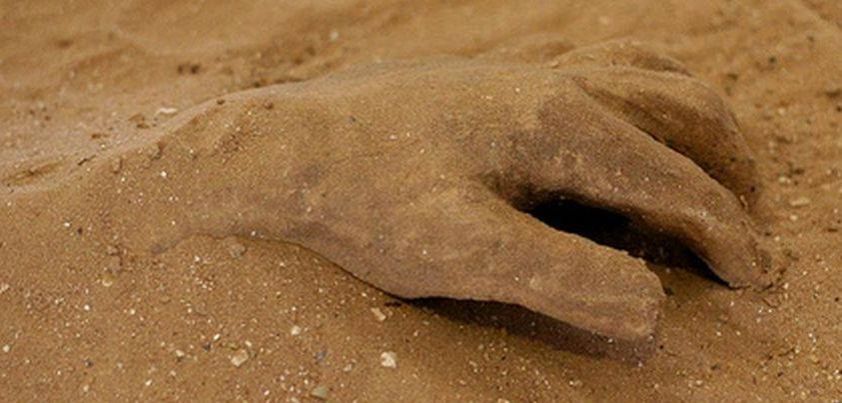 The major themes of this story by Herman Bosman are attitudes towards the dead, and equality in death. A Boer farmer and native enemy die side by side while fighting in a ‘Transvaal Kafir War’. When the farmer’s friends return to take his body home for a proper burial, they find that wild animals have mixed up the bones. The friends spend a lot of time trying to sort out which is which so that the dead farmer does not have to lie forever among the warrior’s bones. A yellow ‘kafir’ dog judges the result. Other themes: war, mateship, racism. More…
The major themes of this story by Herman Bosman are attitudes towards the dead, and equality in death. A Boer farmer and native enemy die side by side while fighting in a ‘Transvaal Kafir War’. When the farmer’s friends return to take his body home for a proper burial, they find that wild animals have mixed up the bones. The friends spend a lot of time trying to sort out which is which so that the dead farmer does not have to lie forever among the warrior’s bones. A yellow ‘kafir’ dog judges the result. Other themes: war, mateship, racism. More…
The Eatonville Anthology
 Rather than a single story, Zora Neale Hurston’s Eatonville Anthology is a series of vignettes and anecdotes about life in a small African-American community outside Orlando, Florida in the early 1920s. Eatonville was Hurston’s hometown, and the power of her anthology is that each story is based on either real people and events or local folklore. This and the use of authentic dialect capture the local color and folksy spirit of the town, and highlight an important theme: the traditional role of storytelling in preserving cultural heritage. Other themes: community, connection, change. More…
Rather than a single story, Zora Neale Hurston’s Eatonville Anthology is a series of vignettes and anecdotes about life in a small African-American community outside Orlando, Florida in the early 1920s. Eatonville was Hurston’s hometown, and the power of her anthology is that each story is based on either real people and events or local folklore. This and the use of authentic dialect capture the local color and folksy spirit of the town, and highlight an important theme: the traditional role of storytelling in preserving cultural heritage. Other themes: community, connection, change. More…
Misery / The Lament
 In this story by Anton Chekhov, sledge driver Iona Potapov is distraught because his son has died and he feels alone in the world. Another translation of the title is “The Lament” (a show of sorrow for someone who has died or something that is gone). The story addresses the question: What could be worse than the sadness associated with losing a loved one? Chekhov’s answer: To feel so lonely and cut off from the world that you have no one to talk to about it.. Themes include grief, discomfort, indifference, cruelty, loneliness, the healing power of animals. More…
In this story by Anton Chekhov, sledge driver Iona Potapov is distraught because his son has died and he feels alone in the world. Another translation of the title is “The Lament” (a show of sorrow for someone who has died or something that is gone). The story addresses the question: What could be worse than the sadness associated with losing a loved one? Chekhov’s answer: To feel so lonely and cut off from the world that you have no one to talk to about it.. Themes include grief, discomfort, indifference, cruelty, loneliness, the healing power of animals. More…
Heavy-Set
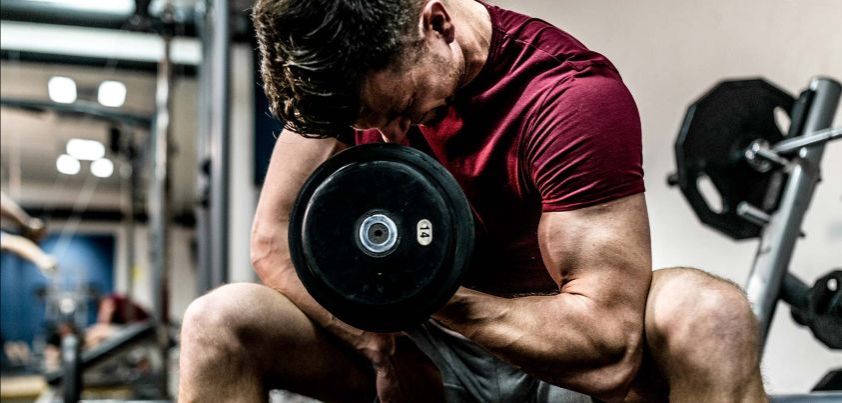 Ray Bradbury‘s character Lenny (Leonard) lives at home with his mother and has a lot going for him. He has a body-builder’s physique, secure job, nice car, and no shortage of girls wanting to go out with him. Unfortunately, he is also mentally and socially challenged. He doesn’t take disappointment or ridicule well, often barely able to control his temper. The story takes place over a Halloween night. Lenny is excited, but the party he was looking forward to is a flop, leading to a potentially explosive homecoming. Themes include alienation, repression, interdependence, arrested development, fitting in, fear, despair. More…
Ray Bradbury‘s character Lenny (Leonard) lives at home with his mother and has a lot going for him. He has a body-builder’s physique, secure job, nice car, and no shortage of girls wanting to go out with him. Unfortunately, he is also mentally and socially challenged. He doesn’t take disappointment or ridicule well, often barely able to control his temper. The story takes place over a Halloween night. Lenny is excited, but the party he was looking forward to is a flop, leading to a potentially explosive homecoming. Themes include alienation, repression, interdependence, arrested development, fitting in, fear, despair. More…
Grandfather’s Story
 This two-part story by Catherine Lim begins with the background of the narrator’s grandparents. We learn that the grandfather, unable to live with his wife who cruelly exploited bondmaids (female slaves) in growing a successful garment business, found lifetime love with another woman. In the second part of the story, the grandfather relates a folktale-like account of how the fates of all three were predestined a thousand years previously when the Almighty passed judgement on a Chinese farmer, his good-hearted but naïve wife, and a cruel, mercenary nun. Themes include love, cruelty, slavery, greed, fate, rebirth and karmic justice. More…
This two-part story by Catherine Lim begins with the background of the narrator’s grandparents. We learn that the grandfather, unable to live with his wife who cruelly exploited bondmaids (female slaves) in growing a successful garment business, found lifetime love with another woman. In the second part of the story, the grandfather relates a folktale-like account of how the fates of all three were predestined a thousand years previously when the Almighty passed judgement on a Chinese farmer, his good-hearted but naïve wife, and a cruel, mercenary nun. Themes include love, cruelty, slavery, greed, fate, rebirth and karmic justice. More…
Markheim
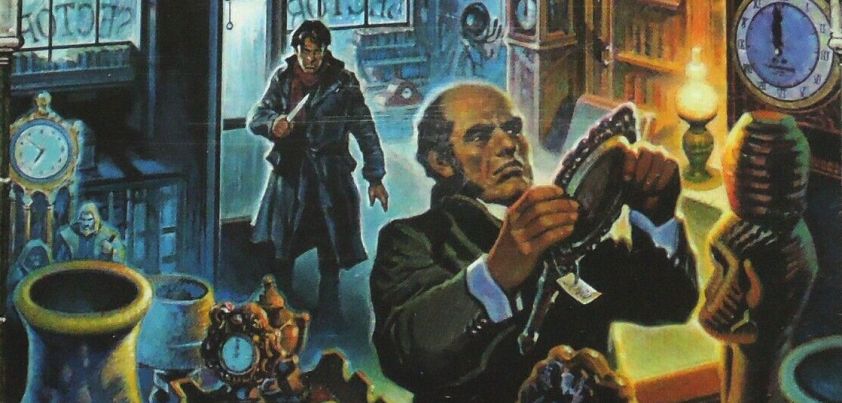 The central themes of this Robert Louis Stevenson classic are self-awareness and the nature of good and evil. Markheim, a hitherto petty thief, “steps up” in the criminal world by murdering an antique dealer. It is Christmas day, the dealer’s shop is closed, and his maid has gone out. As Markheim searches the house looking for money, a mysterious stranger appears. Believing him to be the Devil, Markheim must choose between accepting the stranger’s offer of help and killing the returning maid, or paying the supreme price for his crime. Other themes: poverty, crime and punishment, death, redemption, the supernatural. More…
The central themes of this Robert Louis Stevenson classic are self-awareness and the nature of good and evil. Markheim, a hitherto petty thief, “steps up” in the criminal world by murdering an antique dealer. It is Christmas day, the dealer’s shop is closed, and his maid has gone out. As Markheim searches the house looking for money, a mysterious stranger appears. Believing him to be the Devil, Markheim must choose between accepting the stranger’s offer of help and killing the returning maid, or paying the supreme price for his crime. Other themes: poverty, crime and punishment, death, redemption, the supernatural. More…
Clay
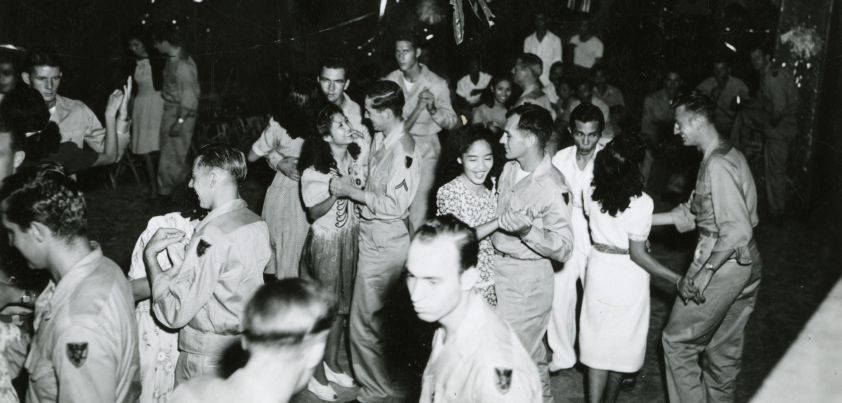 In this story by Juan T. Gatbonton, a sensitive sixteen-year-old Filipino boy is left horrified and disillusioned after an American soldier he had come to idolize boasts about having seduced a pure woman he is infatuated with (his teacher) and reduced her to being just like the other girls. Set during the period of American rule, the story could be regarded as an allegory of colonialization where an occupying power (Clay) exploits what a country has to offer (Miss Rosete) without concern for the consequences. Themes include coming of age, colonialization, friendship, infatuation, betrayal. More…
In this story by Juan T. Gatbonton, a sensitive sixteen-year-old Filipino boy is left horrified and disillusioned after an American soldier he had come to idolize boasts about having seduced a pure woman he is infatuated with (his teacher) and reduced her to being just like the other girls. Set during the period of American rule, the story could be regarded as an allegory of colonialization where an occupying power (Clay) exploits what a country has to offer (Miss Rosete) without concern for the consequences. Themes include coming of age, colonialization, friendship, infatuation, betrayal. More…
In the Shadow of War
 In this story by Ben Okri, a boy becomes curious about a mysterious woman who walks through his village every day wearing a black veil. Set during the Nigerian Civil War, other children think she is a witch; three soldiers looking for her think she is a spy. The soldiers follow the woman into a forest, as does the boy. Sufficient ambiguity exists for readers to question whether the horrific events described in the forest really take place, or if the woman is indeed a spy or simply a kindly benefactor. Themes include loyalty and morality in war, brutality, humanity. More…
In this story by Ben Okri, a boy becomes curious about a mysterious woman who walks through his village every day wearing a black veil. Set during the Nigerian Civil War, other children think she is a witch; three soldiers looking for her think she is a spy. The soldiers follow the woman into a forest, as does the boy. Sufficient ambiguity exists for readers to question whether the horrific events described in the forest really take place, or if the woman is indeed a spy or simply a kindly benefactor. Themes include loyalty and morality in war, brutality, humanity. More…
The Eye
 In this story from Paul Bowles, a long-term expatriate living in Tangier investigates the death of a fellow expatriate he has never met. The man died from an apparent digestive illness, suspected to be the result of gradual poisoning. Rumor among the expatriate community blamed his night watchman, who had both motive (a reported legacy) and opportunity (he had replaced the original cook, purportedly with a relative). The narrator’s investigation suggests that rather than murder, the dead man was the victim of a ritual healing gone wrong. Themes: expatriate lifestyle (paranoia, detachment, idle gossip), isolation, superstition, criminality vs. fate. More…
In this story from Paul Bowles, a long-term expatriate living in Tangier investigates the death of a fellow expatriate he has never met. The man died from an apparent digestive illness, suspected to be the result of gradual poisoning. Rumor among the expatriate community blamed his night watchman, who had both motive (a reported legacy) and opportunity (he had replaced the original cook, purportedly with a relative). The narrator’s investigation suggests that rather than murder, the dead man was the victim of a ritual healing gone wrong. Themes: expatriate lifestyle (paranoia, detachment, idle gossip), isolation, superstition, criminality vs. fate. More…
The Lost Child
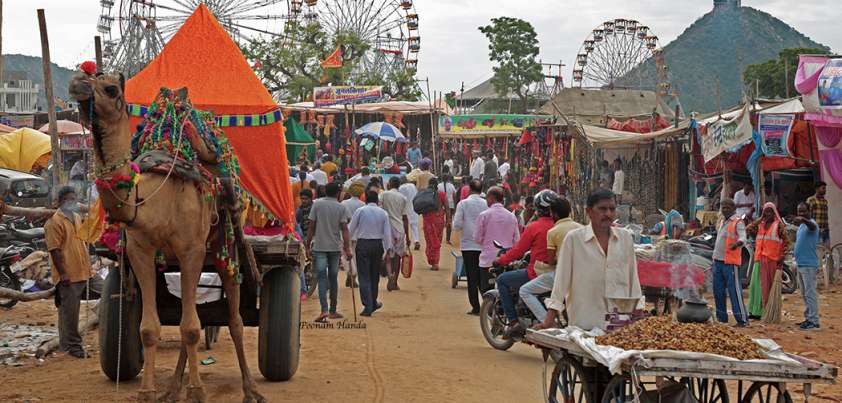 Mulk Raj Anand’s The Lost Child can be looked at on two levels. At its most basic, it is about a boy who gets so carried away by the excitement of a fair that he becomes separated from his parents. Alone in the arms of a kind stranger, all he wants is to be reunited with his mother and father. On another level, it is a story of life. When young, we can’t wait to leave home and make our way in the world. It is not until we lose our parents that we understand how important they really are. More…
Mulk Raj Anand’s The Lost Child can be looked at on two levels. At its most basic, it is about a boy who gets so carried away by the excitement of a fair that he becomes separated from his parents. Alone in the arms of a kind stranger, all he wants is to be reunited with his mother and father. On another level, it is a story of life. When young, we can’t wait to leave home and make our way in the world. It is not until we lose our parents that we understand how important they really are. More…
The Easthound
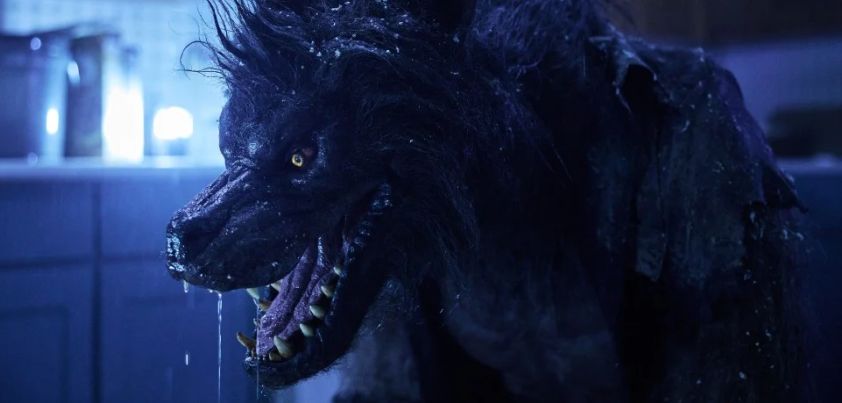 This post-apocalyptic horror story by Nalo Hopkinson redefines the concept of puberty. A virus has swept the world, causing all who achieve adulthood to “sprout” into ravenous, werewolf-like beasts. To escape them, children hide in small groups. The story is told from the perspective of twin sisters, one of whom naively believes she caused the virus by inventing the word easthound. Their group are closely monitoring an older boy who is about to undergo the change and will soon have to leave them, when the unexpected occurs. Themes include violence, camaraderie, survival, childhood innocence, adult predation. More…
This post-apocalyptic horror story by Nalo Hopkinson redefines the concept of puberty. A virus has swept the world, causing all who achieve adulthood to “sprout” into ravenous, werewolf-like beasts. To escape them, children hide in small groups. The story is told from the perspective of twin sisters, one of whom naively believes she caused the virus by inventing the word easthound. Their group are closely monitoring an older boy who is about to undergo the change and will soon have to leave them, when the unexpected occurs. Themes include violence, camaraderie, survival, childhood innocence, adult predation. More…
The Lottery
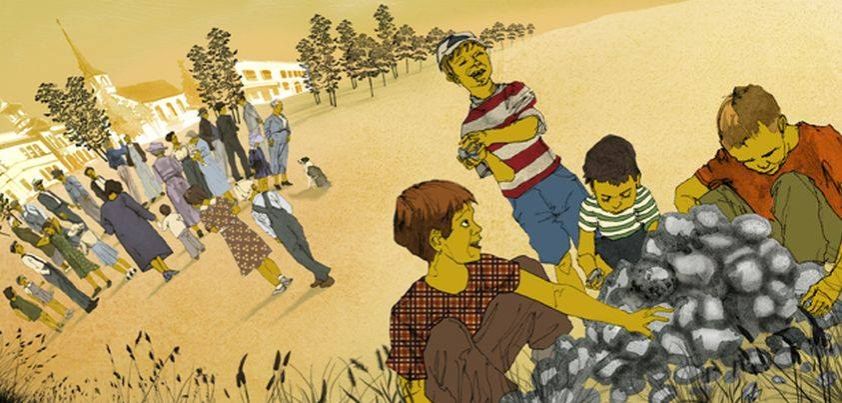 Author Shirley Jackson had no idea of the angry reaction The Lottery would receive when it first appeared in 1948. The story tells how each year the otherwise ‘normal’ people in a small American farming town perform a gruesome ritual to ensure a favorable growing season. The major theme is how herd or mob mentality can drive people to do things they would never consider individually. Other themes include dystopia, gender roles, violence and cruelty (human sacrifice), acceptance (the blind following of tradition), and man’s inhumanity to man (the potential for evil in all of us). More…
Author Shirley Jackson had no idea of the angry reaction The Lottery would receive when it first appeared in 1948. The story tells how each year the otherwise ‘normal’ people in a small American farming town perform a gruesome ritual to ensure a favorable growing season. The major theme is how herd or mob mentality can drive people to do things they would never consider individually. Other themes include dystopia, gender roles, violence and cruelty (human sacrifice), acceptance (the blind following of tradition), and man’s inhumanity to man (the potential for evil in all of us). More…
How to Tell a True War Story
 This metafictional story by Tim O’Brien uses observations on a small collection of stories related by soldiers to highlight the difficulty of faithfully communicating one’s wartime experiences. His central argument is that in war it’s difficult to separate what happened from what seemed to happen and therefore you lose your sense of the definite, hence your sense of truth itself. This leads to the seemingly paradoxical conclusion that in a true war story nothing is ever absolutely true. Themes include the nature of truth in storytelling, memories vs. imagination, the trauma of war, morality. More…
This metafictional story by Tim O’Brien uses observations on a small collection of stories related by soldiers to highlight the difficulty of faithfully communicating one’s wartime experiences. His central argument is that in war it’s difficult to separate what happened from what seemed to happen and therefore you lose your sense of the definite, hence your sense of truth itself. This leads to the seemingly paradoxical conclusion that in a true war story nothing is ever absolutely true. Themes include the nature of truth in storytelling, memories vs. imagination, the trauma of war, morality. More…
Long Walk to Forever
 Kurt Vonnegut described this semi-autobiographical tale, written in honor of his wife, as a sickeningly slick love story. A satire of the “love at first sight” romance cliché, it describes how, after a platonic friendship of almost twenty years, a single expression of love and two kisses is all it takes for Catharine to question her plans to marry another man and fall into Newt’s arms. Themes include communication (failure to express/discuss their feelings sooner), taking people for granted (Newt didn’t appreciate how much Catharine meant to him until almost losing her!), and fighting for what is important in life. More…
Kurt Vonnegut described this semi-autobiographical tale, written in honor of his wife, as a sickeningly slick love story. A satire of the “love at first sight” romance cliché, it describes how, after a platonic friendship of almost twenty years, a single expression of love and two kisses is all it takes for Catharine to question her plans to marry another man and fall into Newt’s arms. Themes include communication (failure to express/discuss their feelings sooner), taking people for granted (Newt didn’t appreciate how much Catharine meant to him until almost losing her!), and fighting for what is important in life. More…
The Imp of the Perverse
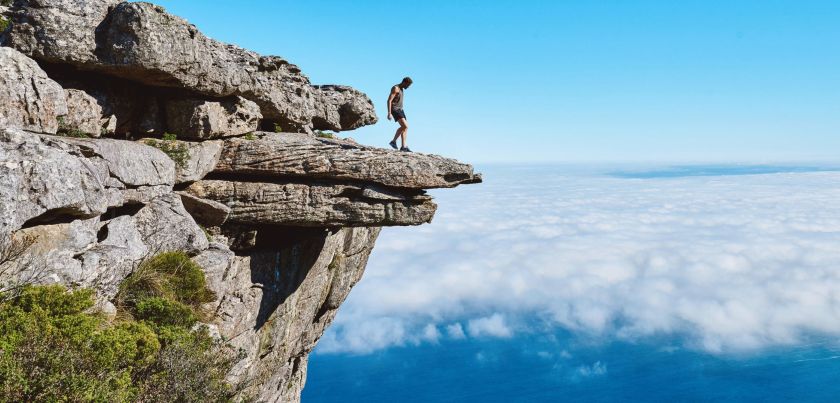 Like two of our earlier Edgar Allan Poe tales (The Back Cat and The Tell-Tale Heart), this story involves an unreliable, unhinged narrator facing execution for murder trying to account for his crime. He blames his actions on an agent he claims to be in all of us called the “Imp of the Perverse”. The Imp, he argues, is an urge that drives people to do things they shouldn’t for the simple reason that they know it to be wrong. Ironically, the Imp that drove him to murder also drove him to confess. Themes include perverseness, obsession, madness, self-destruction. More…
Like two of our earlier Edgar Allan Poe tales (The Back Cat and The Tell-Tale Heart), this story involves an unreliable, unhinged narrator facing execution for murder trying to account for his crime. He blames his actions on an agent he claims to be in all of us called the “Imp of the Perverse”. The Imp, he argues, is an urge that drives people to do things they shouldn’t for the simple reason that they know it to be wrong. Ironically, the Imp that drove him to murder also drove him to confess. Themes include perverseness, obsession, madness, self-destruction. More…
The Ant and The Grasshopper
 This story by W. Somerset Maugham takes its name from a famous Aesop fable. The fable carries the message that hard work is rewarded, while laziness leads to disaster. The story presents a more balanced view of the world. Sometimes good things happen to lazy or even quite bad people, causing them to be better off than those who work hard every day. After years of hard work, Gordon Ramsay (the Ant) is rewarded with a comfortable retirement. He thinks it unfair when his brother Tom (the Grasshopper) ends up many times richer after a life of laziness and cheating others. More…
This story by W. Somerset Maugham takes its name from a famous Aesop fable. The fable carries the message that hard work is rewarded, while laziness leads to disaster. The story presents a more balanced view of the world. Sometimes good things happen to lazy or even quite bad people, causing them to be better off than those who work hard every day. After years of hard work, Gordon Ramsay (the Ant) is rewarded with a comfortable retirement. He thinks it unfair when his brother Tom (the Grasshopper) ends up many times richer after a life of laziness and cheating others. More…
In the Middle of the Fields
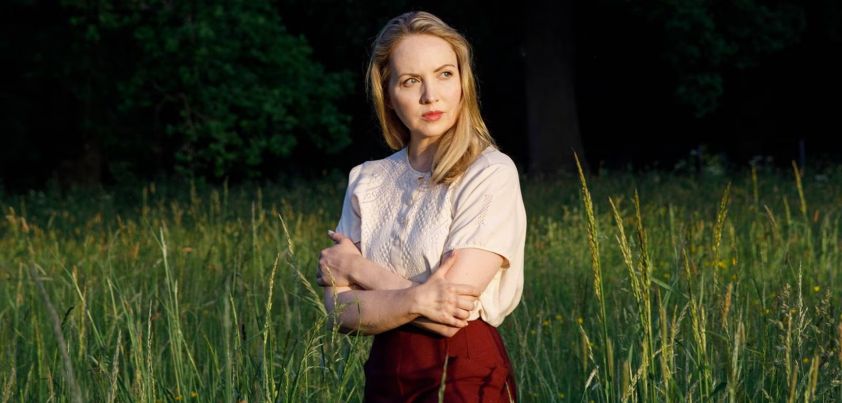 This story from Mary Lavin highlights the isolation, vulnerability and resilience of a recently widowed farmer’s wife. Its major theme is the need to “move on” after the death of a loved one. Having decided to manage the farm herself, she hires a neighbor to “top” (trim) the long grass in her fields. The neighbor visits that night seeking to defer the work. She bests him with her knowledge of farming practices and, after rejecting an inappropriate advance, realizes that he is yet to get over a similar loss that occurred many years earlier. Other themes: passion, grief, fear, sexism. More…
This story from Mary Lavin highlights the isolation, vulnerability and resilience of a recently widowed farmer’s wife. Its major theme is the need to “move on” after the death of a loved one. Having decided to manage the farm herself, she hires a neighbor to “top” (trim) the long grass in her fields. The neighbor visits that night seeking to defer the work. She bests him with her knowledge of farming practices and, after rejecting an inappropriate advance, realizes that he is yet to get over a similar loss that occurred many years earlier. Other themes: passion, grief, fear, sexism. More…
The Right Kind of House
 In this story by Henry Slesar, a stranger in an expensive car visits a small-town real-estate agent to enquire about a dilapidated house that has a ‘For Sale’ sign out front. The agent advises that the owner (an elderly woman with an apparent sentimental attachment to the house) is insisting on over seven times a fair asking price. The man visits the woman to try to negotiate and is left with a bitter taste in his mouth when, after she proves inflexible, he is forced to agree to her price. Themes include crime, patience, appearances vs. reality, vengeance, justice. More…
In this story by Henry Slesar, a stranger in an expensive car visits a small-town real-estate agent to enquire about a dilapidated house that has a ‘For Sale’ sign out front. The agent advises that the owner (an elderly woman with an apparent sentimental attachment to the house) is insisting on over seven times a fair asking price. The man visits the woman to try to negotiate and is left with a bitter taste in his mouth when, after she proves inflexible, he is forced to agree to her price. Themes include crime, patience, appearances vs. reality, vengeance, justice. More…
The End of Something / Three-Day Blow
 These two Ernest Hemingway stories should ideally be read together as they are linked by storyline (the end of a relationship) and major themes (change, friendship and moving on). The lumber town of Hortons Bay has died and its people have left because all the old-growth trees have been cut down. Like the townspeople, Nick Adams is planning a new beginning. He has decided to break up with girlfriend Marjorie, telling her “it isn’t fun anymore”. We learn the reason in the second story, which introduces additional themes of class and/or racial prejudice, selfishness, mateship and regret. More…
These two Ernest Hemingway stories should ideally be read together as they are linked by storyline (the end of a relationship) and major themes (change, friendship and moving on). The lumber town of Hortons Bay has died and its people have left because all the old-growth trees have been cut down. Like the townspeople, Nick Adams is planning a new beginning. He has decided to break up with girlfriend Marjorie, telling her “it isn’t fun anymore”. We learn the reason in the second story, which introduces additional themes of class and/or racial prejudice, selfishness, mateship and regret. More…
The Tenant
 In this story by Bharati Mukherjee, a young Indian-American college professor struggles to make a new life after a series of “indiscretions”. She has sullied her reputation among her Brahman caste by marrying and later being left by an American graduate student, and compensated for the loss and shame through promiscuity. She finds solace as the lover of her armless landlord but, in the hope of reconnecting with her culture, abruptly leaves him when re-contacted by a “god-like” Indian man she had met through a matrimonial advertisement. Themes include identity, cultural confusion, social class, nonconformity, rejection, shame, alienation, loneliness, connection. More…
In this story by Bharati Mukherjee, a young Indian-American college professor struggles to make a new life after a series of “indiscretions”. She has sullied her reputation among her Brahman caste by marrying and later being left by an American graduate student, and compensated for the loss and shame through promiscuity. She finds solace as the lover of her armless landlord but, in the hope of reconnecting with her culture, abruptly leaves him when re-contacted by a “god-like” Indian man she had met through a matrimonial advertisement. Themes include identity, cultural confusion, social class, nonconformity, rejection, shame, alienation, loneliness, connection. More…
The Empty House
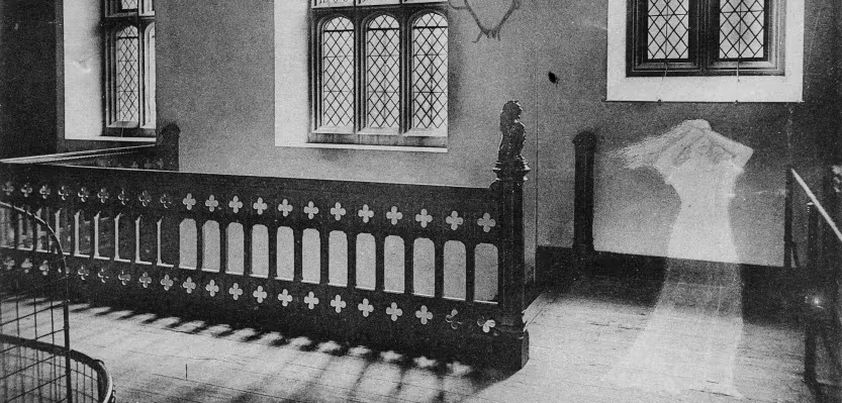 Algernon Blackwood’s most famous ghost story, The Empty House could best be described as a horror story without the horror (no blood, gore, demonic possession, attacks by spectral beings, etc.). The story’s power lies in Blackwood’s ability to inspire terror through atmosphere alone. Its major themes are fear and the interdependence of the two psychic sleuths in confronting their fears. Initially, the ghosts go about their nightly business seemingly indifferent to the visitors. The perceived threat from “IT” only emerges when one of them gives way to fear and they begin to flee. Other themes: curiosity, courage, the supernatural. More…
Algernon Blackwood’s most famous ghost story, The Empty House could best be described as a horror story without the horror (no blood, gore, demonic possession, attacks by spectral beings, etc.). The story’s power lies in Blackwood’s ability to inspire terror through atmosphere alone. Its major themes are fear and the interdependence of the two psychic sleuths in confronting their fears. Initially, the ghosts go about their nightly business seemingly indifferent to the visitors. The perceived threat from “IT” only emerges when one of them gives way to fear and they begin to flee. Other themes: curiosity, courage, the supernatural. More…
Snow, Glass, Apples
 This Neil Gaiman story is yet another re-invention of the Snow White tale. However, a shift in point-of-view from a third-person omniscient narrator to the first-person perspective of the Queen allows the story to be re-imagined in a way we are unlikely to see from Disney. The much-maligned Queen knows a little magic (enough to glimpse the future and enchant the King), but not enough to match her evil stepdaughter. In the end, the Queen’s fate adds a new meaning to the slang term to feel cooked. Themes include power, vampirism, murder, revenge, jealousy, cruelty, sexual depravity (necrophilia, pedophilia, incest). More…
This Neil Gaiman story is yet another re-invention of the Snow White tale. However, a shift in point-of-view from a third-person omniscient narrator to the first-person perspective of the Queen allows the story to be re-imagined in a way we are unlikely to see from Disney. The much-maligned Queen knows a little magic (enough to glimpse the future and enchant the King), but not enough to match her evil stepdaughter. In the end, the Queen’s fate adds a new meaning to the slang term to feel cooked. Themes include power, vampirism, murder, revenge, jealousy, cruelty, sexual depravity (necrophilia, pedophilia, incest). More…
The Revolt of “Mother”
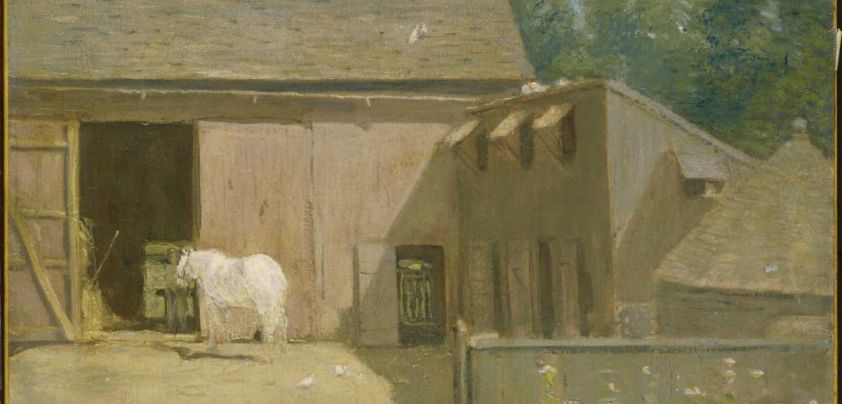 This Mary E. Wilkins Freeman story is an early example of American literary feminism. When Adoniram, an insensitive, authoritarian farmer decides to build a barn on the site of a promised new house and refuses to discuss the issue, his long-suffering wife takes a stand. Sarah, the hard-working and devoted “Mother”, sees his need to spend a few days away as a sign from God. Much to the surprise and amusement of the local community, she goes about turning the new barn into a home. Themes: gender roles/repression (male domination), insincerity (false promises), spirituality, rebellion. More…
This Mary E. Wilkins Freeman story is an early example of American literary feminism. When Adoniram, an insensitive, authoritarian farmer decides to build a barn on the site of a promised new house and refuses to discuss the issue, his long-suffering wife takes a stand. Sarah, the hard-working and devoted “Mother”, sees his need to spend a few days away as a sign from God. Much to the surprise and amusement of the local community, she goes about turning the new barn into a home. Themes: gender roles/repression (male domination), insincerity (false promises), spirituality, rebellion. More…
The New Constitution / Naya Qanun
 A message of this story by Saadat Hasan Manto is to make sure you fully understand something you overhear before acting on it. An illiterate tongawala [coachman] learns about the world by eavesdropping on customers. Over several days, he overhears talk of a new “India Act”, which he misinterprets to be a new constitution that will free India from British rule. Having developed a hatred of the British for subjugating and exploiting his country, he is excited by the “news”. Unfortunately, acting on it lands him in jail. Themes include colonialism vs. freedom and self-determination, excitement, hope, disillusionment. More…
A message of this story by Saadat Hasan Manto is to make sure you fully understand something you overhear before acting on it. An illiterate tongawala [coachman] learns about the world by eavesdropping on customers. Over several days, he overhears talk of a new “India Act”, which he misinterprets to be a new constitution that will free India from British rule. Having developed a hatred of the British for subjugating and exploiting his country, he is excited by the “news”. Unfortunately, acting on it lands him in jail. Themes include colonialism vs. freedom and self-determination, excitement, hope, disillusionment. More…
Who Will Greet You At Home
 In this surreal horror story from Lesley Nneka Arimah, children are created in the form of craft dolls by their mother, blessed by their grandmother or an elderly substitute, and nurtured for a year until they “become flesh”. In the interim they feed, move and act like babies, but in their doll form. The dolls can be made from any material (straw, sticks, clay, etc.) that is strong enough to last a year. But there are rules. When Ogechi, the impoverished protagonist desperate to have a child breaks one, bad things happen. Themes: magic, poverty, exploitation, isolation, obsession, motherhood. More…
In this surreal horror story from Lesley Nneka Arimah, children are created in the form of craft dolls by their mother, blessed by their grandmother or an elderly substitute, and nurtured for a year until they “become flesh”. In the interim they feed, move and act like babies, but in their doll form. The dolls can be made from any material (straw, sticks, clay, etc.) that is strong enough to last a year. But there are rules. When Ogechi, the impoverished protagonist desperate to have a child breaks one, bad things happen. Themes: magic, poverty, exploitation, isolation, obsession, motherhood. More…